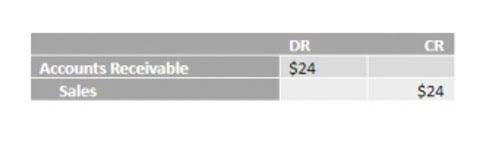Equity Multiplier: Understanding the Equity Multiplier and Its Impact on Return on Equity

By examining the equity multiplier, retained earnings stakeholders can assess the extent to which a company is relying on borrowed funds to finance its operations and growth. On the other hand, a lower equity multiplier suggests a more conservative financial strategy with less exposure to debt-related risks. The Equity Multiplier is a key financial ratio that measures the amount of a company’s assets financed by its shareholders’ equity.
- A high Equity Multiplier entails that the firm isn’t highly leveraged and the ownership is highly diluted.
- In the final step, we will input these figures into our formula from earlier, which divides the average total assets by the total shareholder’s equity.
- It provides insights into a company's leverage and efficiency in utilizing its assets.
- But XYZ Company is less leveraged than ABC Company, and therefore has a lower degree of financial risk.
- Specifically, it is calculated by dividing a company’s total assets by its total shareholders’ equity.
Everything You Need To Master Financial Modeling

That's because it uses less debt and more shareholders' equity to finance its assets. Consider Apple's (AAPL) balance sheet at the end of the 2021 fiscal year. The company's total assets were $351 billion, and the book value of shareholders' equity was $63 billion. Verizon's much lower proportionate shareholder equity value indicates that the business relies more heavily on financing from debt and other interest-bearing liabilities. The company's telecommunications business equity multiplier model is more reminiscent of utilities firms, which have stable, predictable cash flows and typically carry high debt levels.

Equity Multiplier in Different Industries
In this section, we will delve deeper into the interpretation of https://www.bookstime.com/articles/what-are-t-accounts this ratio and explore its implications. The equity multiplier is a financial ratio that measures the financial leverage of a company. It helps investors and analysts understand how much debt a company is using to finance its assets and how that affects its return on equity (ROE). The equity multiplier is calculated by dividing total assets by total equity. The equity multiplier is a financial ratio that measures the amount of debt used to finance a company's assets.
- It identifies the sources of fund for the company and the extent of financial obligation in the form of debt.
- Current assets include cash, accounts receivable, and inventory, while non-current assets encompass property, plant, and equipment, investments, and intangible assets.
- The equity multiplier is calculated by dividing a company's total asset value by the total equity held in the company's stock.
- Understanding the equity multiplier ratio is crucial for investors and analysts to make informed decisions about a company's financial health and risk profile.
- Understanding the components of the equity multiplier is crucial to comprehending its impact on return on equity (ROE).
Indicates financial risk

In conclusion, the equity multiplier provides valuable insights into the balance between debt and equity financing. Its role in evaluating financial leverage, its industry-specific variations, and its integration into frameworks like the DuPont Analysis underscore its importance. Understanding this ratio enables stakeholders to make informed decisions, balancing opportunities with the risks inherent in a company’s capital structure. Calculation of the equity multiplier is relatively simple and straightforward. Consider the balance sheet of Apple Inc. (AAPL) as of the end of fiscal year 2017. The company's total assets were $375 billion, and the book value of shareholder equity was $134 billion.

Consider the company's industry and business model when assessing the appropriateness of the equity multiplier. Different industries may have varying levels of leverage that are considered acceptable. Monitor changes in the equity multiplier over time to identify trends in the company's leverage and financial risk. Compare the equity multiplier of a company with its industry peers to gain a better understanding of its leverage position. Equity multiplier can compare the financial leverage of different companies. A company with a higher equity multiplier is more leveraged than a company with a lower equity multiplier.

The equity multiplier for Verizon was 4.41x (366.6 ÷ 83.2) based on these values. The equity multiplier is found by dividing a company's total assets by total shareholder equity. On the other hand, Apple is more susceptible to changing economic conditions or evolving industry standards than utilities or large traditional telecommunications firms. Differences in business models mean that higher financial leverage does not necessarily indicate superior financial health.
